Everyone is using AI note-takers these days, and for good reason. They save a ton of time in documenting what happened in the meeting and make it easy for everyone to stay on the same page about the summary and the action items. And there are a ton of different options out there from Fireflies to Fathom to Otter to Circleback. But it turns out that you can very easily build your own flexible and powerful AI note-taker using the tools you already use.
In this tutorial, I will show you how to use Google Drive's built-in meeting recordings combined with Anthropic's prompt generator and OpenAI's GPT-4o Mini to create your own personalized AI note-taker in just a few minutes.
1. Set up Google Drive Recordings
By default, you will have a special folder in Google Drive called Meet Recordings that will automatically capture all of the raw video recordings and transcripts created by Google Meet. Here's an example:

When you are in a meeting in Google Meet, make sure to turn on recording and check the box to automatically create a transcript.
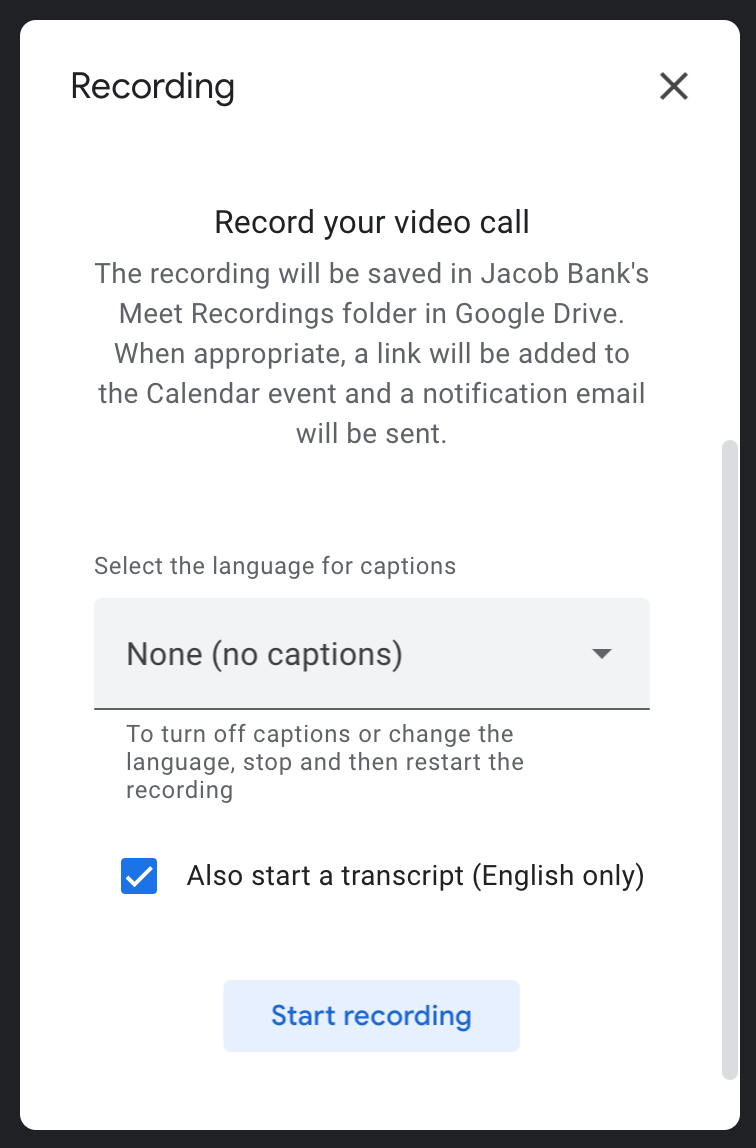
2. Create your Meeting Notes Template
To create good meeting notes automatically, it's helpful to start with a meeting notes template of what you want the output to look like. To do this, create a new Google doc and put any of the fields you want in your meeting notes in curly braces like this: {{ summary }}.
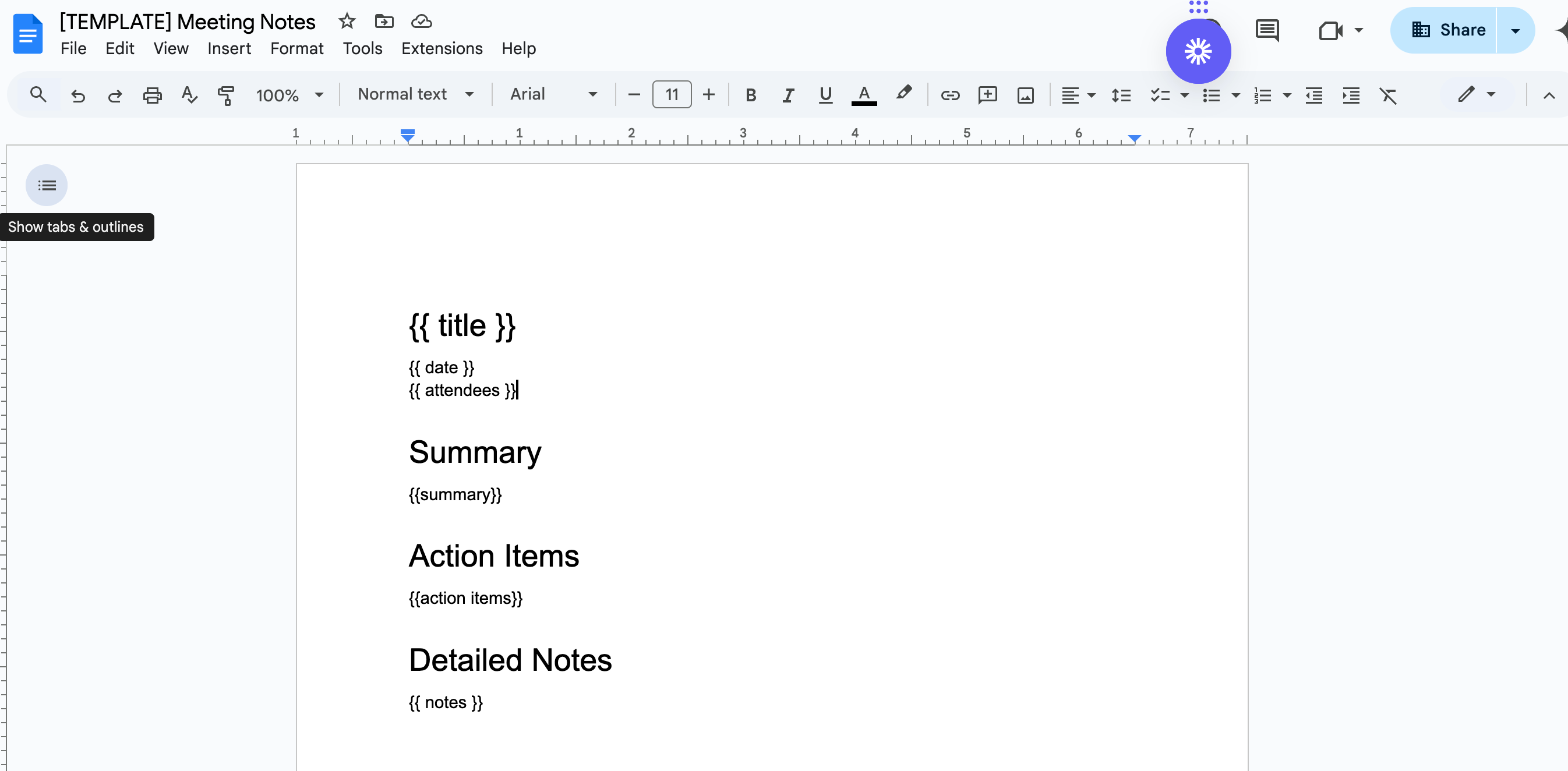
3. Create your Relay.app Workflow
Now that we have our setup done, we're going to use Relay.app to create our AI note-taker. If you don't yet have a Relay.app account, you can sign up for free at https://relay.app.
The workflow will start with a trigger that detects when a new file has been added to a Google Drive folder.

Next, you'll add a simple path to differentiate between transcripts and recordings. For this workflow, we only want to work with transcripts, but you could definitely do something with the full recordings as well.
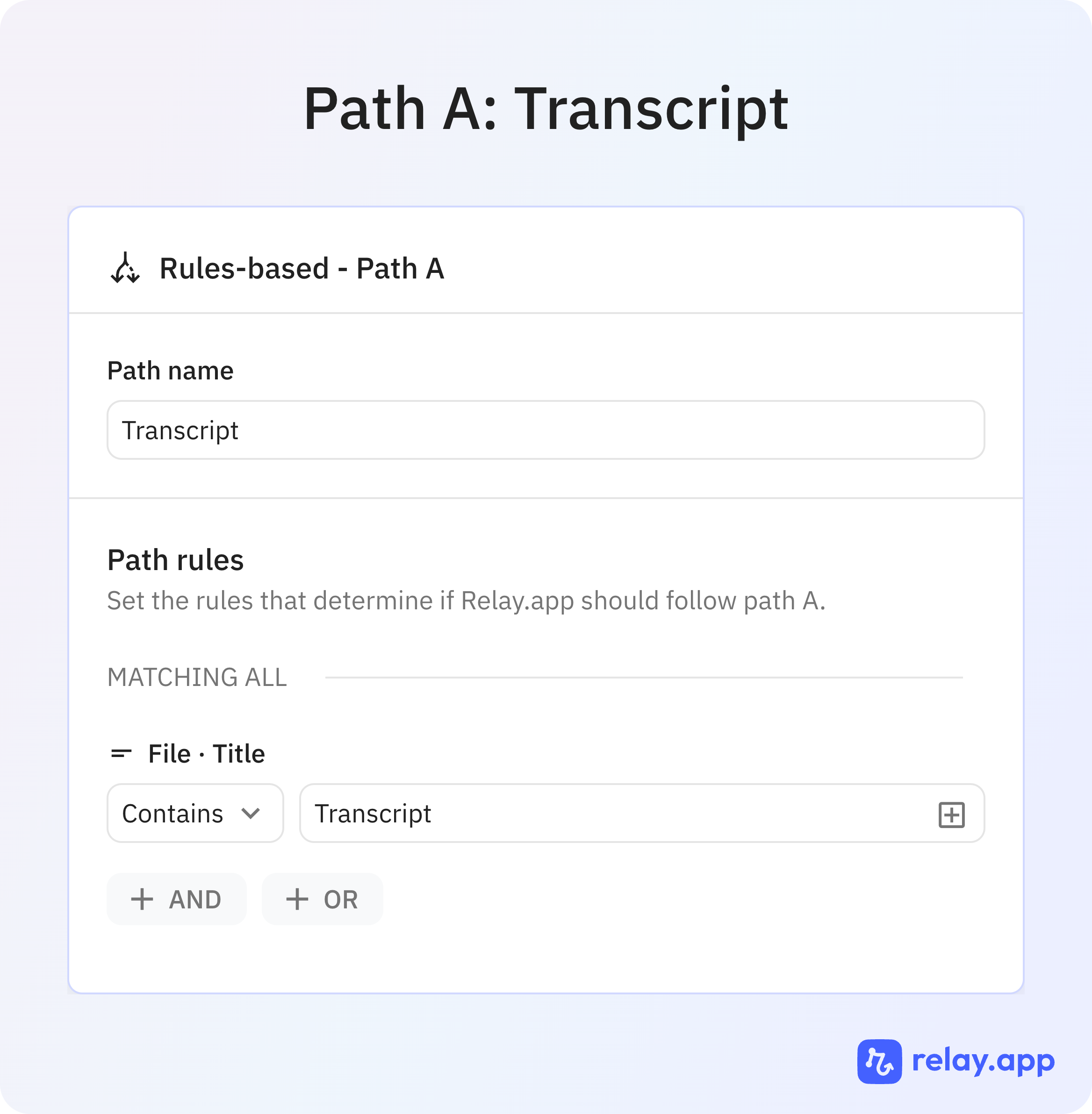
4. Create your AI step and prompt
Next, we will create the AI step that will turn the raw transcript into the nicely organized meeting notes. To do this, we will first use the Anthropic prompt generator to generate a high-quality prompt.
Go to console.anthropic.com/dashboard and create a free account if you don't have one yet. Once done, you can select Generate a Prompt.
To generate a high-quality prompt, you can type in something simple like "Given a complete transcript of a meeting, create the notes". You can also include any of the particular fields you want in the notes, for example, action items.
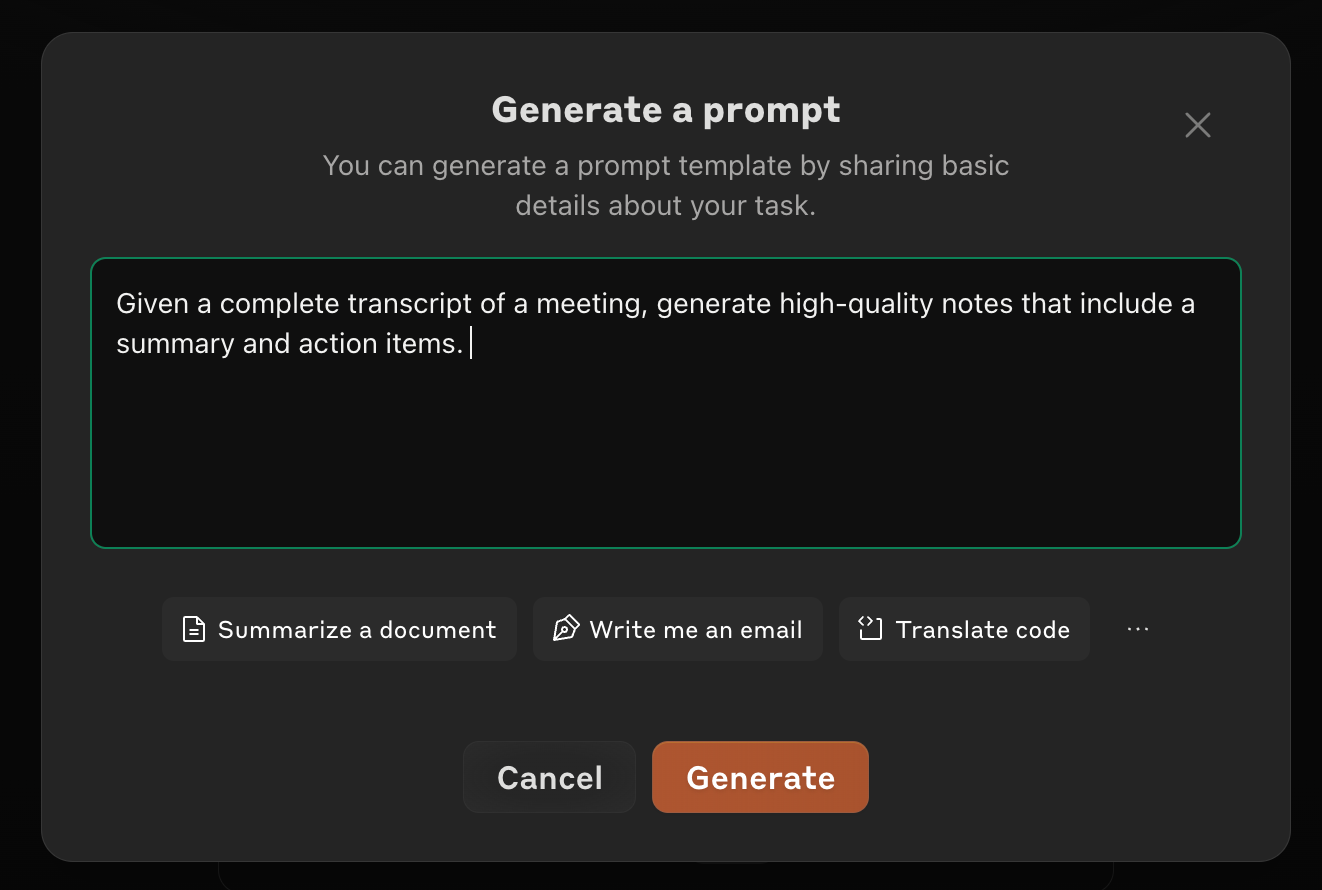
Anthropic will then generate a complete prompt for you that you can test and modify.
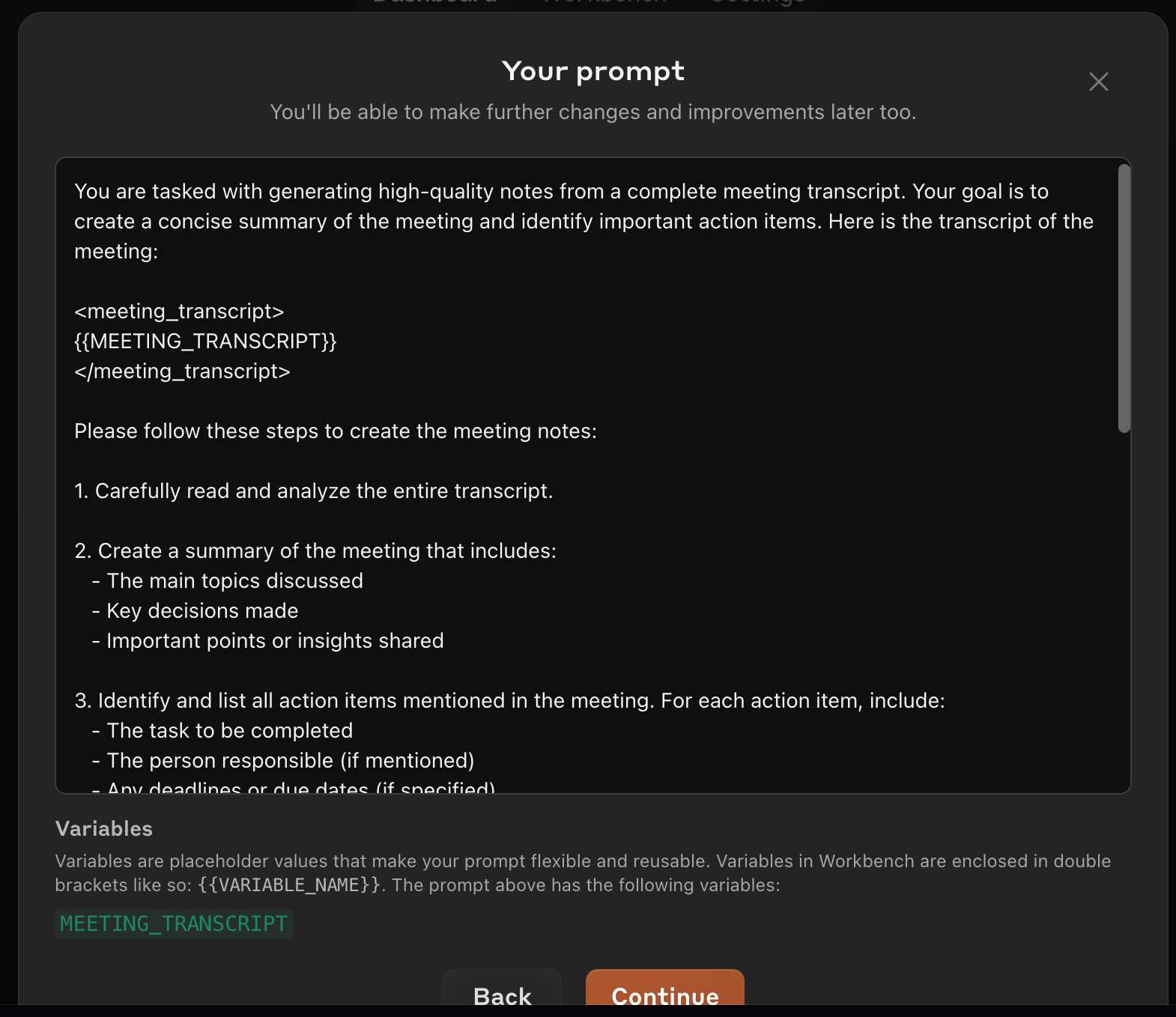
Now that you have your prompt, you can copy and paste it into your AI step in Relay.app. From there, you can automatically generate the outputs that will then be used to fill in your Google Docs template.
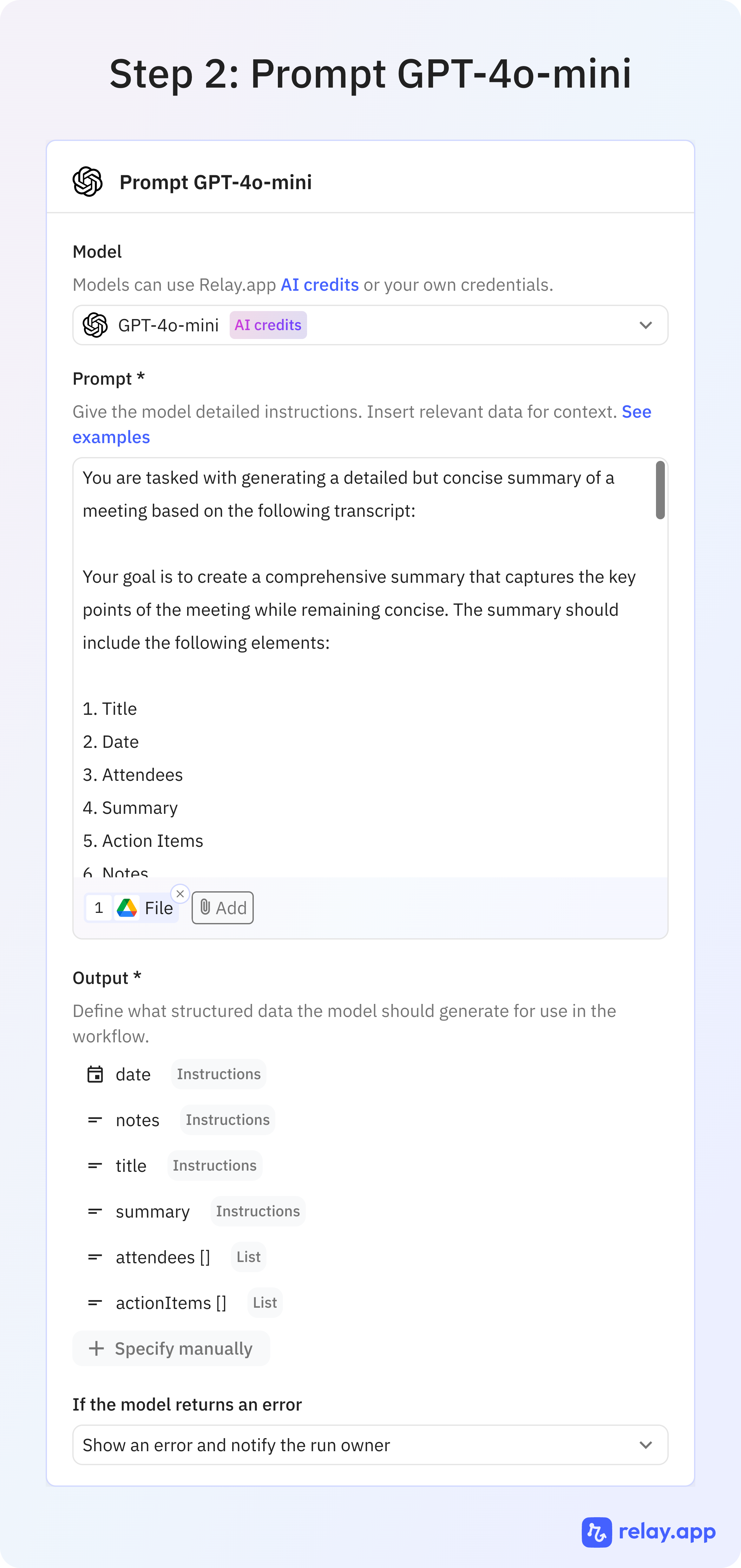
5. Fill in the new notes document
The last step in your Relay.app workflow will copy your meeting notes template into a new Google document and automatically fill in the placeholders in that document using the output of your AI step.
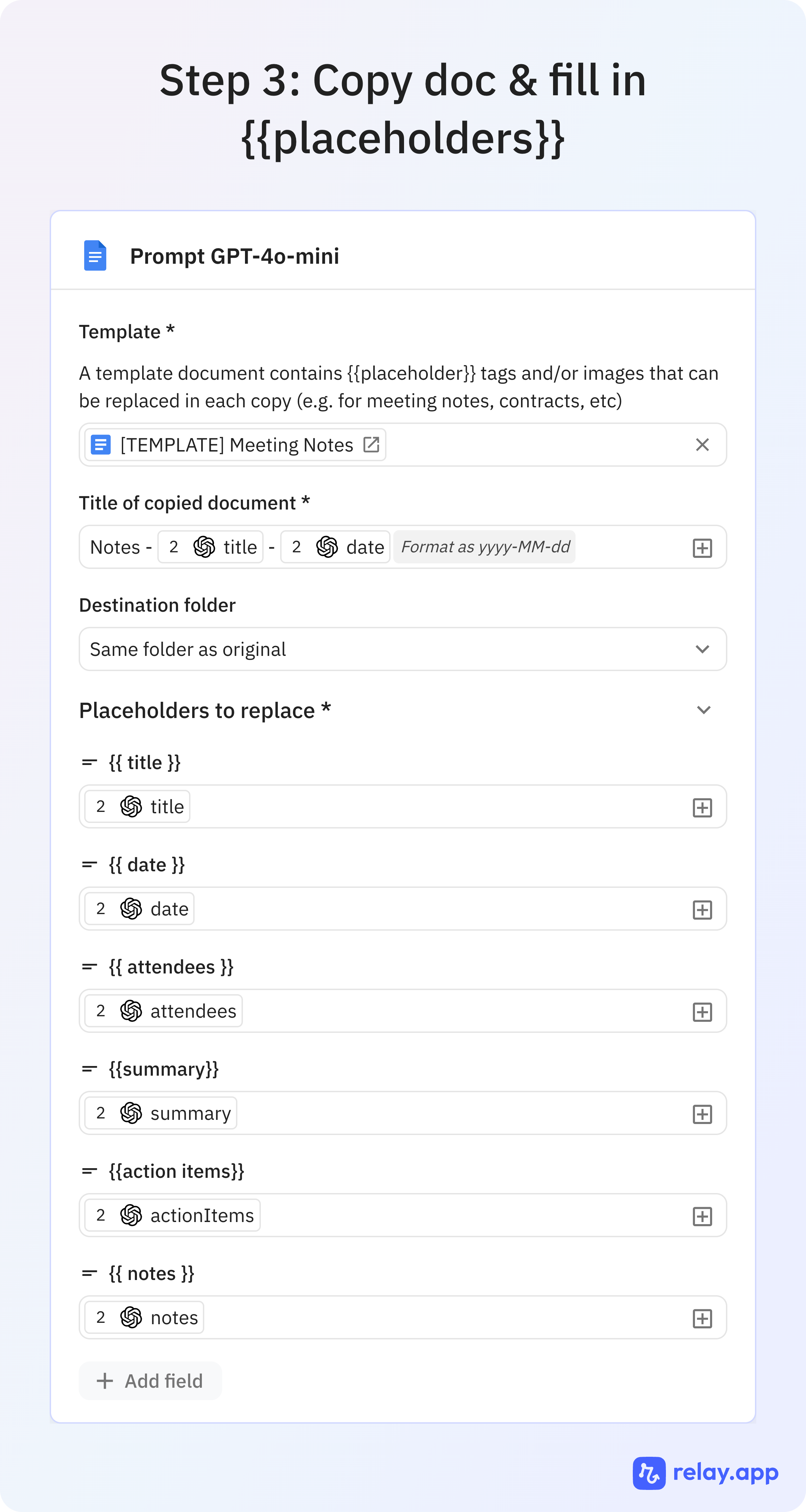
6. Test your workflow and adapt the prompt as needed
Now that you have a complete workflow, you can test it on historical examples and make sure the notes look like what you expect. If there's anything that you don't like, you can update your prompt to give it more guidance about how to create great notes or to give it examples of high-quality notes that you've made in the past.

Conclusion
Core AI tools, both the models themselves and the surrounding tools to generate and test your prompts are becoming better and better everyday. If you combine the latest tools from Anthropic and OpenAI with Relay.app's deep integrations with all of the apps you already use, you'll find that you can create your own personalized AI workflows for free with better performance and at a fraction of the cost of other tools that you might have to buy.

